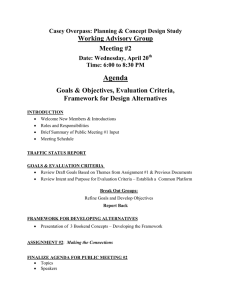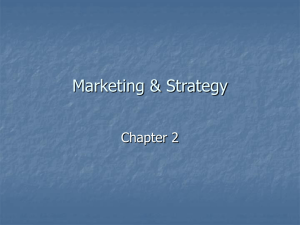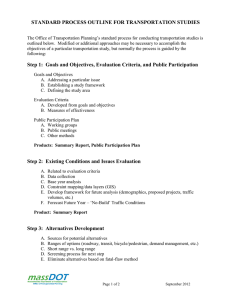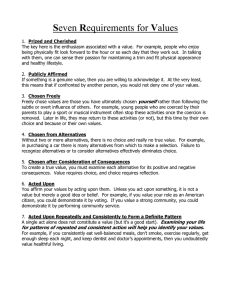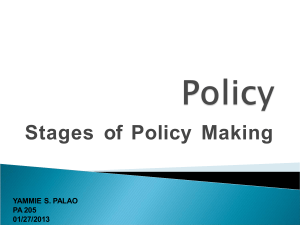Discussion Questions for 17.317, U.S. Social Policy Part III: The Policymaking-Process
advertisement
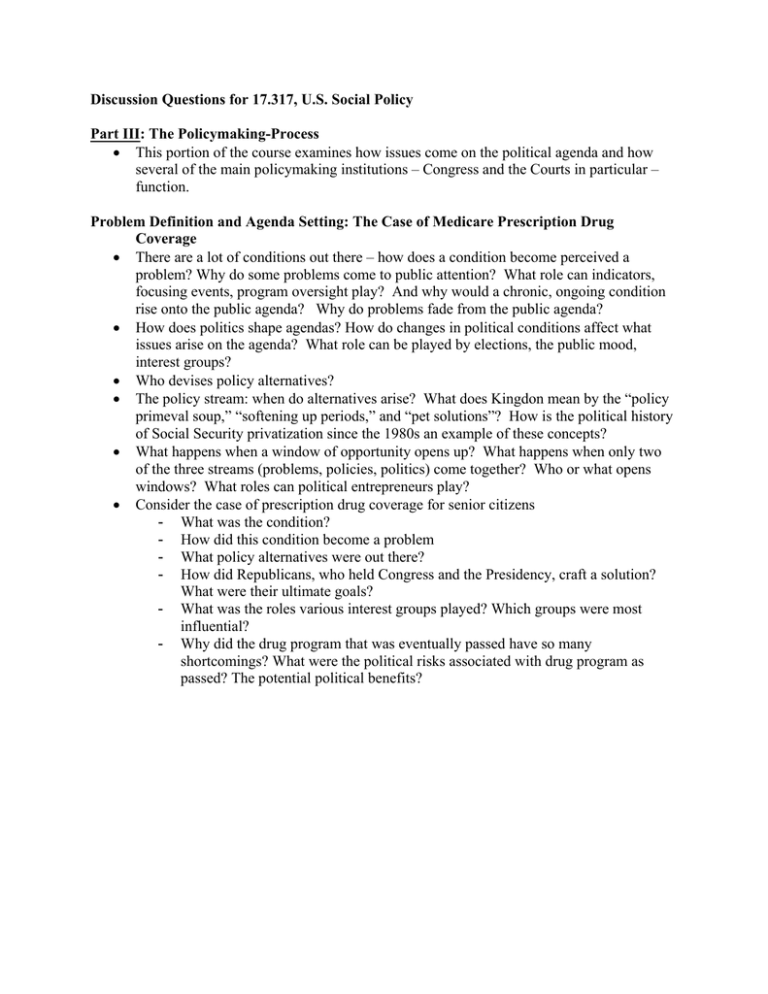
Discussion Questions for 17.317, U.S. Social Policy Part III: The Policymaking-Process • This portion of the course examines how issues come on the political agenda and how several of the main policymaking institutions – Congress and the Courts in particular – function. Problem Definition and Agenda Setting: The Case of Medicare Prescription Drug Coverage • There are a lot of conditions out there – how does a condition become perceived a problem? Why do some problems come to public attention? What role can indicators, focusing events, program oversight play? And why would a chronic, ongoing condition rise onto the public agenda? Why do problems fade from the public agenda? • How does politics shape agendas? How do changes in political conditions affect what issues arise on the agenda? What role can be played by elections, the public mood, interest groups? • Who devises policy alternatives? • The policy stream: when do alternatives arise? What does Kingdon mean by the “policy primeval soup,” “softening up periods,” and “pet solutions”? How is the political history of Social Security privatization since the 1980s an example of these concepts? • What happens when a window of opportunity opens up? What happens when only two of the three streams (problems, policies, politics) come together? Who or what opens windows? What roles can political entrepreneurs play? • Consider the case of prescription drug coverage for senior citizens - What was the condition? - How did this condition become a problem - What policy alternatives were out there? - How did Republicans, who held Congress and the Presidency, craft a solution? What were their ultimate goals? - What was the roles various interest groups played? Which groups were most influential? - Why did the drug program that was eventually passed have so many shortcomings? What were the political risks associated with drug program as passed? The potential political benefits?
